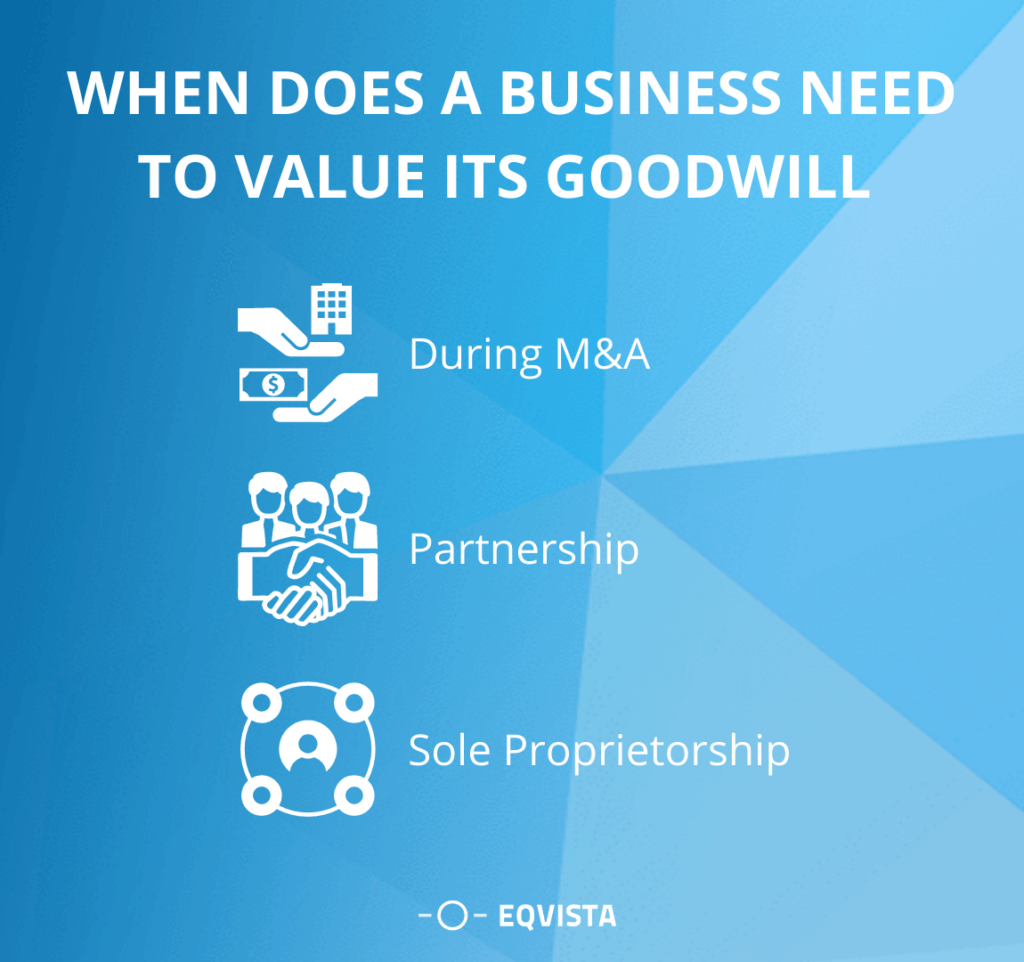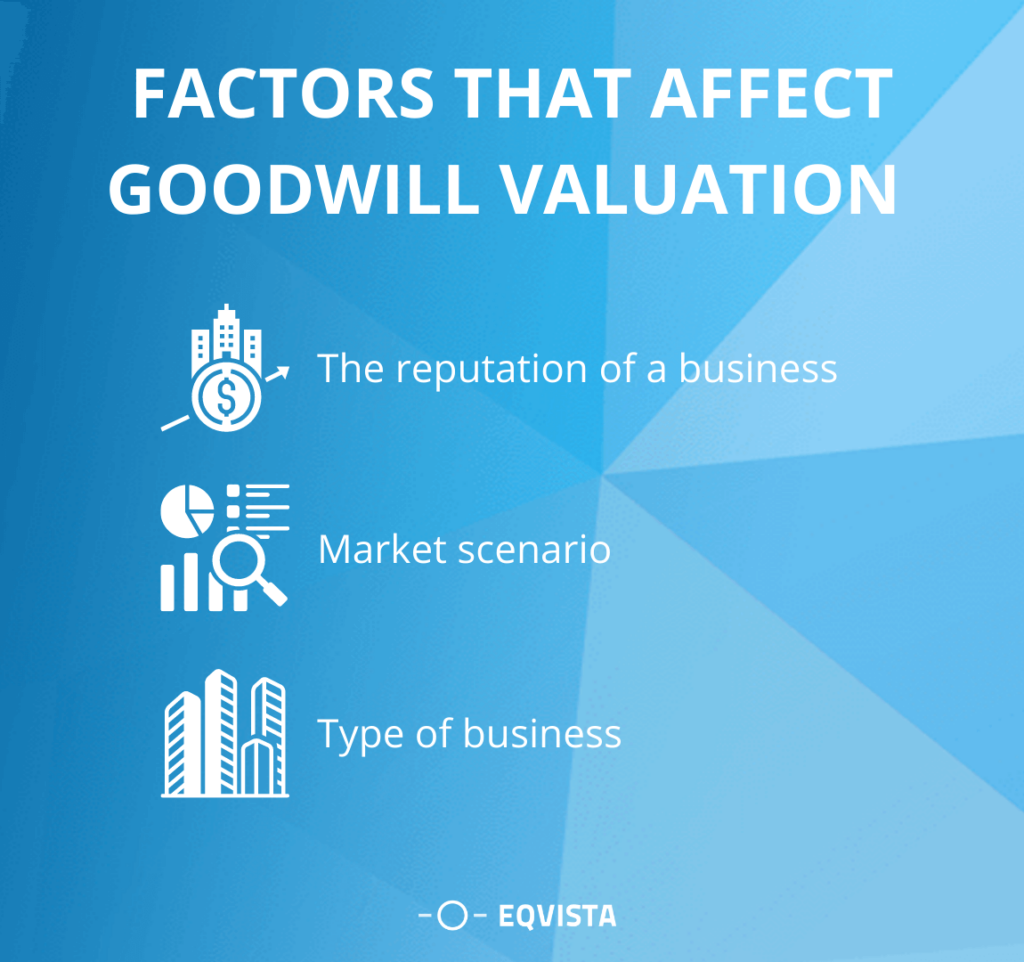Getting the Value of Goodwill – Intangible Asset Valuation
When a firm looking to buy another company is willing to pay a price premium over the fair market worth of the company’s net assets, the idea of goodwill comes into play.
The intangible asset known as goodwill is produced when one firm buys another. The purchasing price of a corporation frequently surpasses its book value. The gap between a company’s purchase price and its book value is known as goodwill. It’s crucial to account for goodwill in order to maintain the parent company’s accounts in order. Goodwill is an intangible asset in accounting. When a firm looking to buy another company is willing to pay a price premium over the fair market worth of the company’s net assets, the idea of goodwill comes into play.
Goodwill valuation in business
Before deducting the wages of the owners, goodwill is appraised by multiplying the amount for maintainable profits by a multiplier ranging from one to five. The multiplier employed is subjective, and it is determined by criteria such as recent business growth and profitability.
What is goodwill in a company?
Goodwill is an intangible asset associated with the purchase of a company by another company. Goodwill is defined as the fraction of the acquisition price that is greater than the whole of the net fair value of all assets bought and liabilities taken in the transaction. Goodwill exists for a variety of reasons, including the value of a company’s brand name, a strong client base, good customer relations, good employee relations, and proprietary technologies.
How does goodwill affect some business activities?
When an acquirer buys a target company, the value of goodwill usually comes into play. The value of the target’s goodwill is normally calculated as the difference between the acquiring company’s net assets at fair value and the target’s net assets at fair value. If the acquiring company pays less than the target’s book value, it gains negative goodwill, indicating that the company was purchased at a discount in a distressed sale.
What does goodwill impairment mean?
When the carrying value of goodwill on financial statements exceeds its fair value, corporations declare a goodwill impairment charge. Goodwill is documented in accounting after a corporation buys assets and liabilities for a price that is higher than their identifiable net value.
Example of goodwill in business
To put it another way, if a firm named ABC has 10 crores in assets minus liabilities and another company buys it for 15 crores, the premium value after the acquisition is 5 crores. This sum of 5 crores will be recorded as goodwill on the acquirer’s balance sheet.
Goodwill valuation
In comparison to a newly created business, a well-established firm gains a strong reputation in the market, builds client trust, and has more commercial connections. Goodwill is the monetary value of an advantage that a buyer is willing to pay for. When a buyer pays for Goodwill, he expects to make a lot of money in comparison to the profits made by other companies. As a result, goodwill exists only in the situation of companies that make exceptional profits, not in the case of companies that make typical earnings or losses.
Understand goodwill valuation
Goodwill is the value of a company’s reputation earned through time in terms of predicted future profits over and above typical profits. Goodwill is a real intangible asset that cannot be seen or felt but may be bought and sold in reality. The importance of goodwill value in a partnership cannot be overstated.
When does a business need to value its goodwill?
Goodwill is computed by deducting the difference between the liabilities and the fair market value of the assets from the company’s purchase price. Companies must examine the value of goodwill at least once a year on their financial statements and reflect any impairments.

- During M&A – Goodwill is an intangible asset that is produced when one firm buys another for more than its net asset value. It is recorded on the balance sheet. Unlike other assets with a known useful life, goodwill is not amortized or depreciated but is instead assessed for goodwill impairment regularly. If the value of goodwill is judged to be impaired, it must be written off, lowering the company’s earnings.
- Partnership – Partnership plays an imperative role if two partners are bonded together with the same assets. They might have created goodwill in an organization together. For example, in a partnership business, all partners share equal liability and earnings, although, in other businesses, partners may have restricted liability.
- Sole Proprietorship – A sole proprietorship is an unincorporated business with only one owner who is responsible for paying personal income tax on profits. Because there is no government participation in the formation of sole proprietorships, they are popular among small business owners and contractors.
How to calculate the value of goodwill?
The value of goodwill is calculated by subtracting the fair value of the company’s net identifiable assets from the total purchase price; the fair value of net identifiable assets is calculated by subtracting the fair value of the net liabilities from the sum of the fair value of all the company’s net identifiable assets.
Goodwill valuation methods
It is an intangible asset that symbolizes a company’s non-physical assets. It is extremely valuable, yet identifying and valuing it is difficult. Here is the explanation of the goodwill valuation methods, which are extremely effective :
- Average Profits Method – The average profit is multiplied by the number of years in this procedure, which is referred to as years of purchase. The formula can be used to compute it. Goodwill is calculated by multiplying the average profit by the number of years since the purchase.
- Super Profits Method – It’s the difference between typical profits and predicted future sustaining profits. The goodwill is calculated by multiplying super-profits by a specific year of purchase. It can be calculated using the formula below. Actual or Average Profit Equals Super Profit.
- Capitalisation Method – The original capital applied is subtracted from the capitalized amount of the average profits based on the average return rate to calculate goodwill. The formula that was utilized is listed below.
Example of goodwill valuation
The intangible asset known as goodwill is produced when one firm buys another. The purchasing price of a corporation frequently surpasses its book value. The gap between a company’s purchase price and its book value is known as goodwill. It’s crucial to account for goodwill in order to maintain the parent company’s accounts in order.
Factors that affect goodwill valuation
There are a few factors that affect the goodwill valuation, which are explained below:

- The reputation of a business – The public’s view of a firm and how it works is its reputation. This covers public perceptions of the company’s products or services, as well as employee treatment. A person’s reputation can be good or bad, and it can vary over time.
- Market scenario – One factor that impacts a company’s goodwill is its market status. If a company operates in a monopoly market with no near substitutes, it will have a higher level of goodwill.
- Type of business – The process of determining a company’s economic value is known as goodwill valuation. Professional evaluators are frequently hired to evaluate the value of a company, and they use one or more valuation procedures to arrive at an objective figure. The type of business also determines and affects the goodwill valuation.
How does goodwill affect business valuation?
Goodwill has a significant impact on value since it mitigates the chance that a company’s profitability will suffer once it is sold. The difference between the acquisition price of the business and the fair market value of the tangible assets included in the sale is the goodwill value. Business goodwill is an intangible asset that a firm owns and is connected with its operations. The premium paid when a company is purchased is known as goodwill.
When a company is bought for more than its book worth, the buyer is paying for intangibles like intellectual property, brand recognition, skilled personnel, and customer loyalty. A company’s goodwill is an intangible asset that creates value. Goodwill is influenced by factors such as proprietary or intellectual property and brand familiarity.
While goodwill is difficult to quantify, it is computed by removing the difference between a company’s purchase price and the fair market value of its assets and liabilities.
Get a high-quality goodwill valuation report with Eqvista!
The valuation of goodwill is a common occurrence during corporate mergers and acquisitions. Regardless of how long goodwill has been built, the value of goodwill is only recognized when the business is sold or transferred. And while you prepare your company for its goodwill valuation, keep in mind that you’ll also need to present them with your cap table. If you haven’t already begun using Eqvista to track your shares for free, now is the moment. To learn more, fill up the signup form and get started.
Interested in issuing & managing shares?
If you want to start issuing and managing shares, Try out our Eqvista App, it is free and all online!
